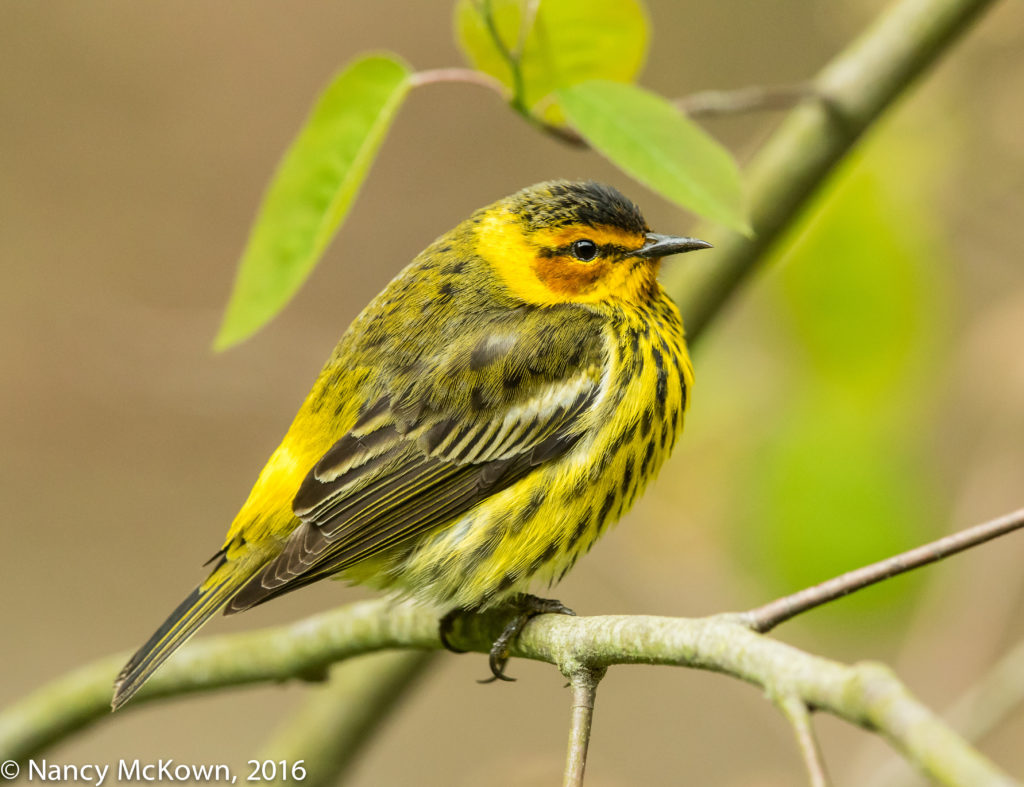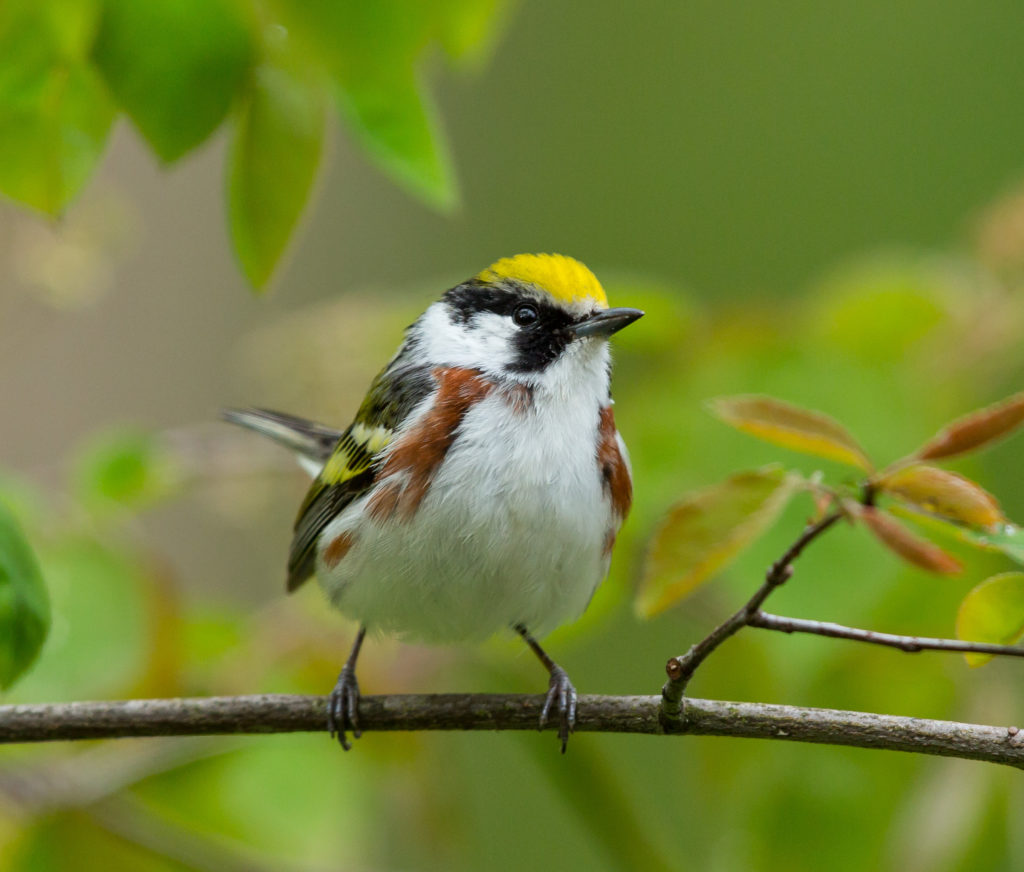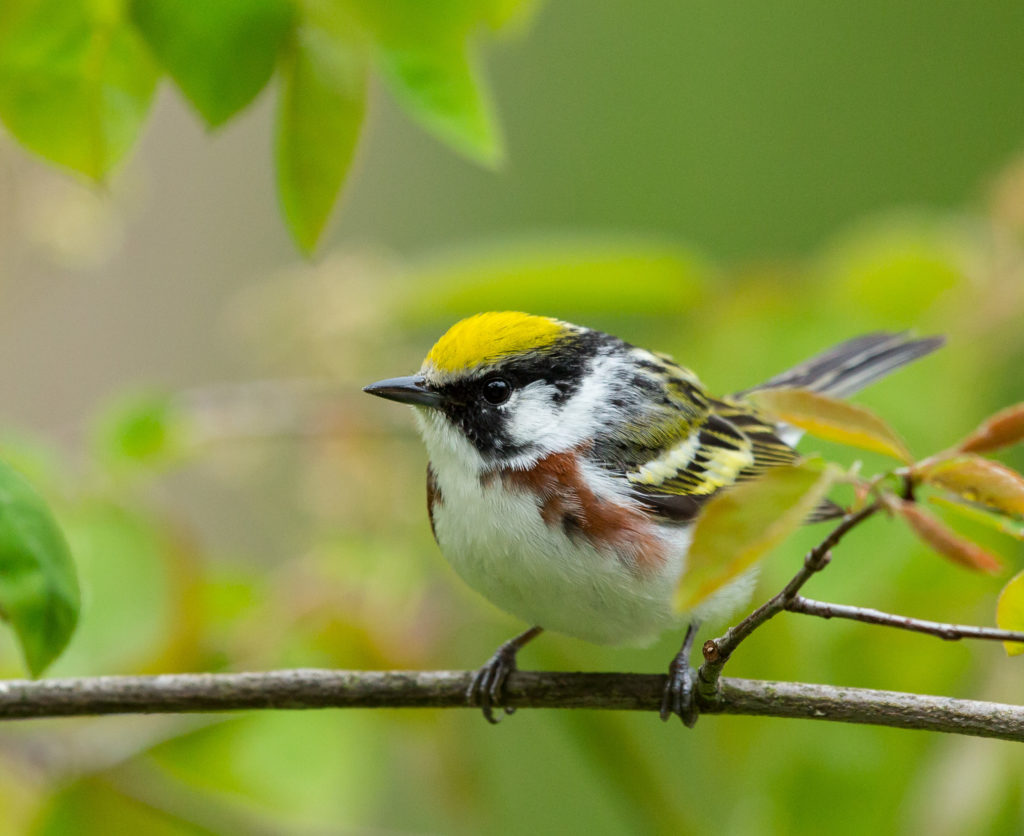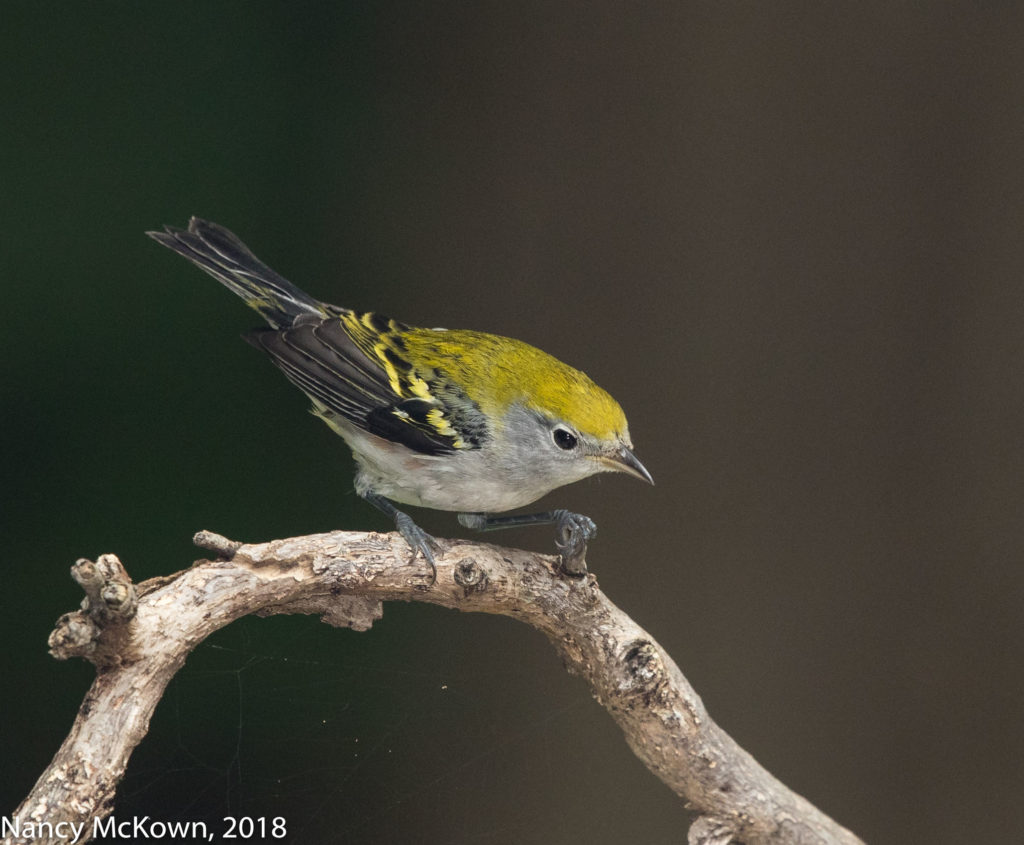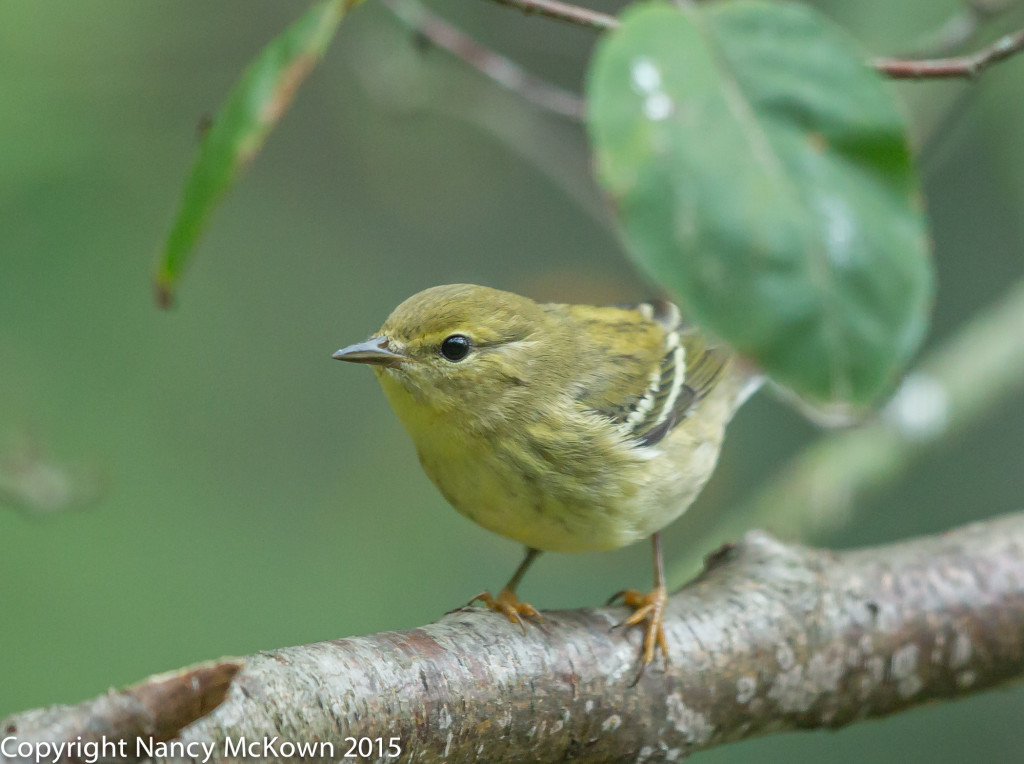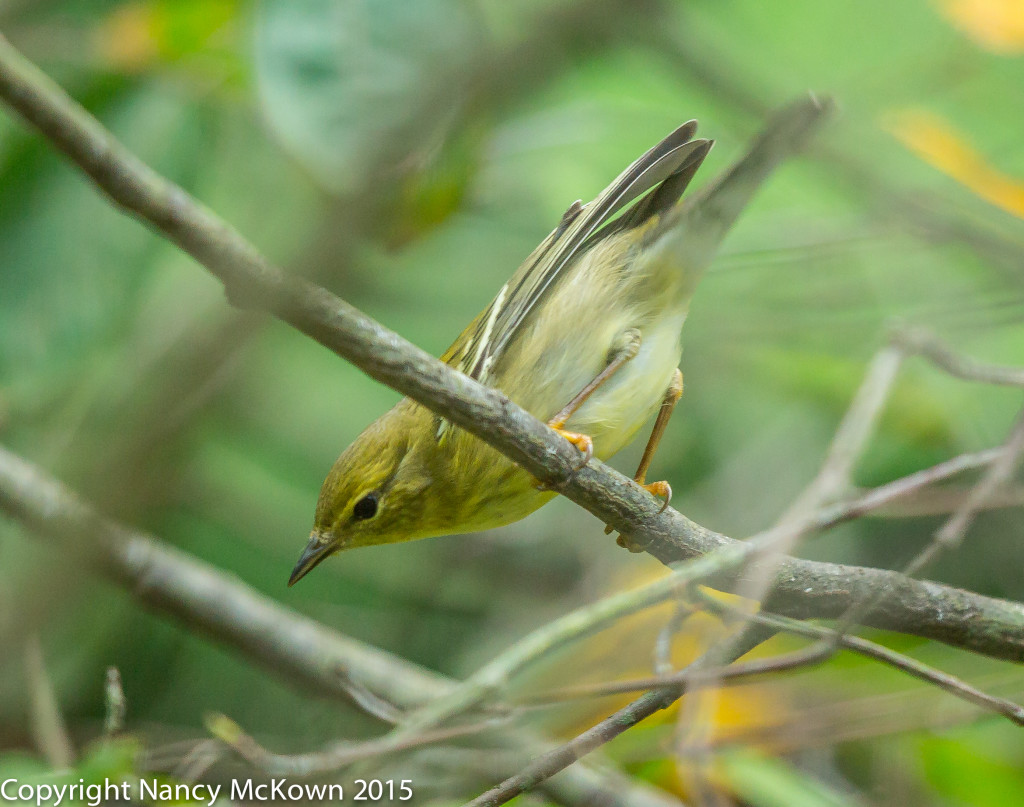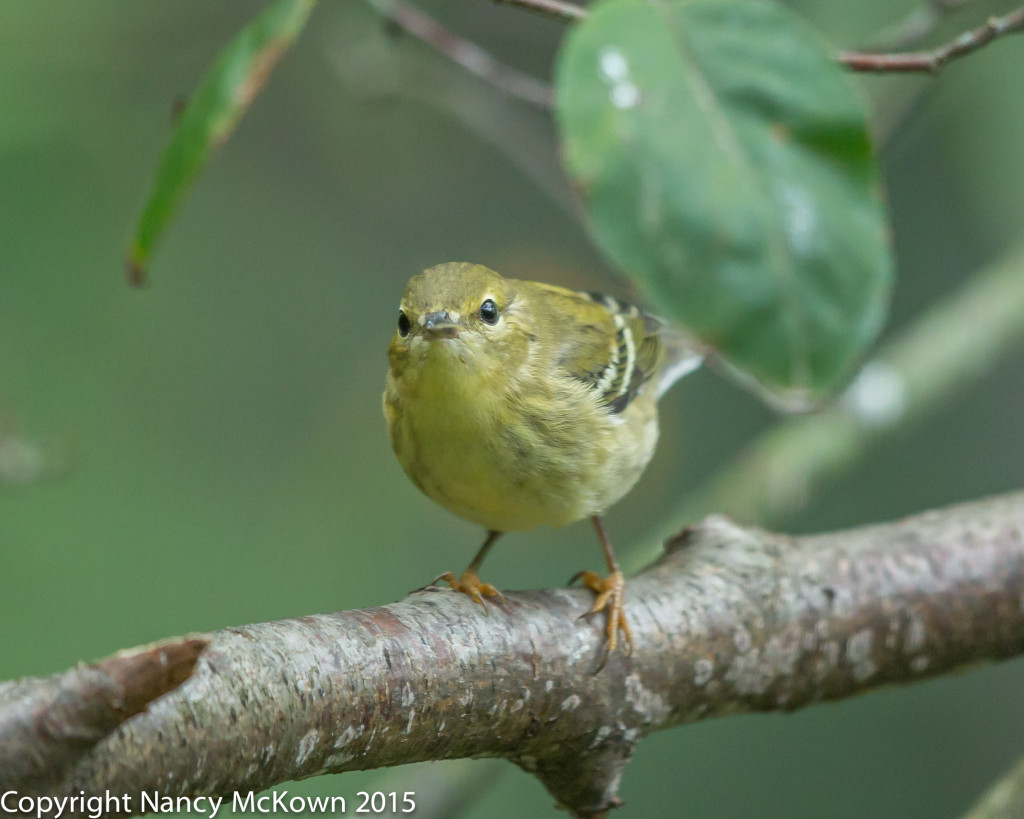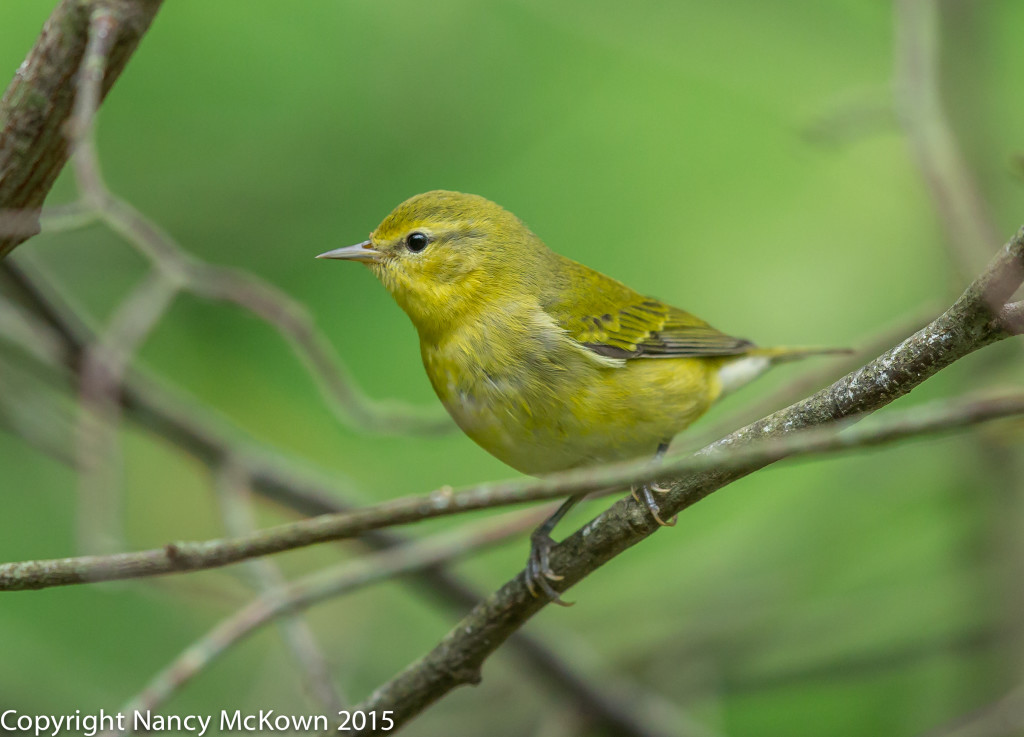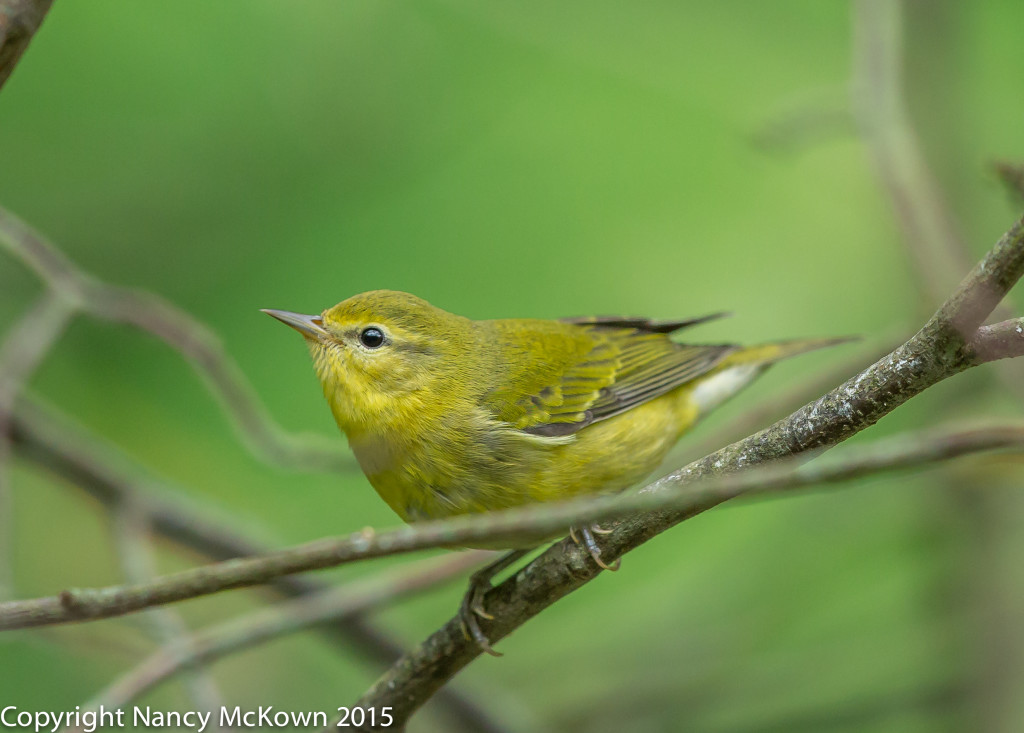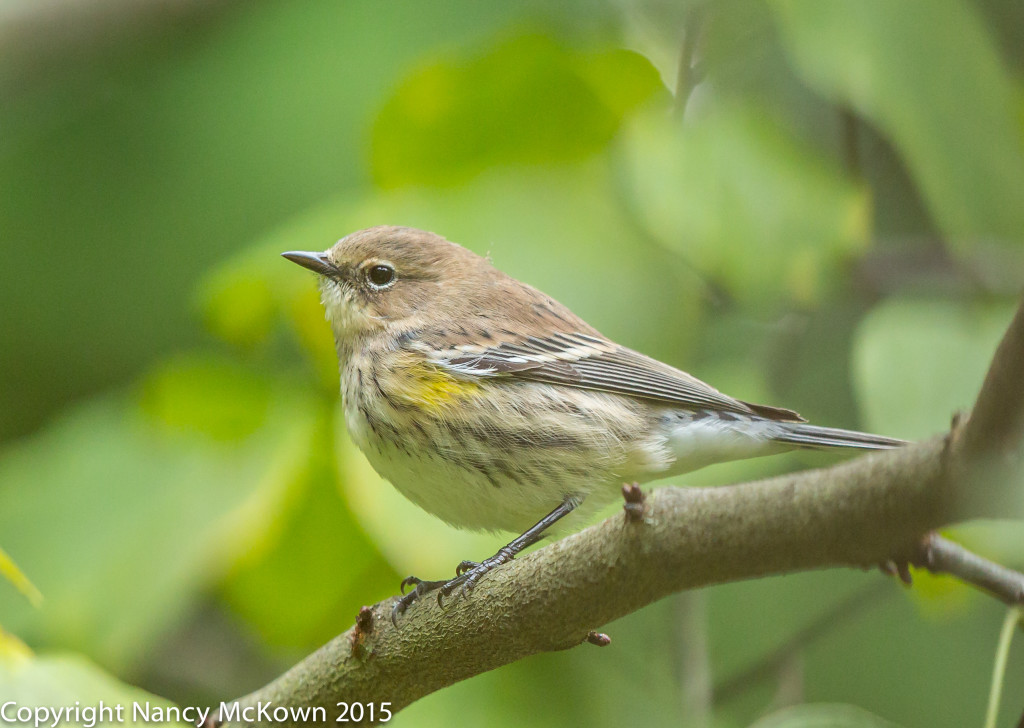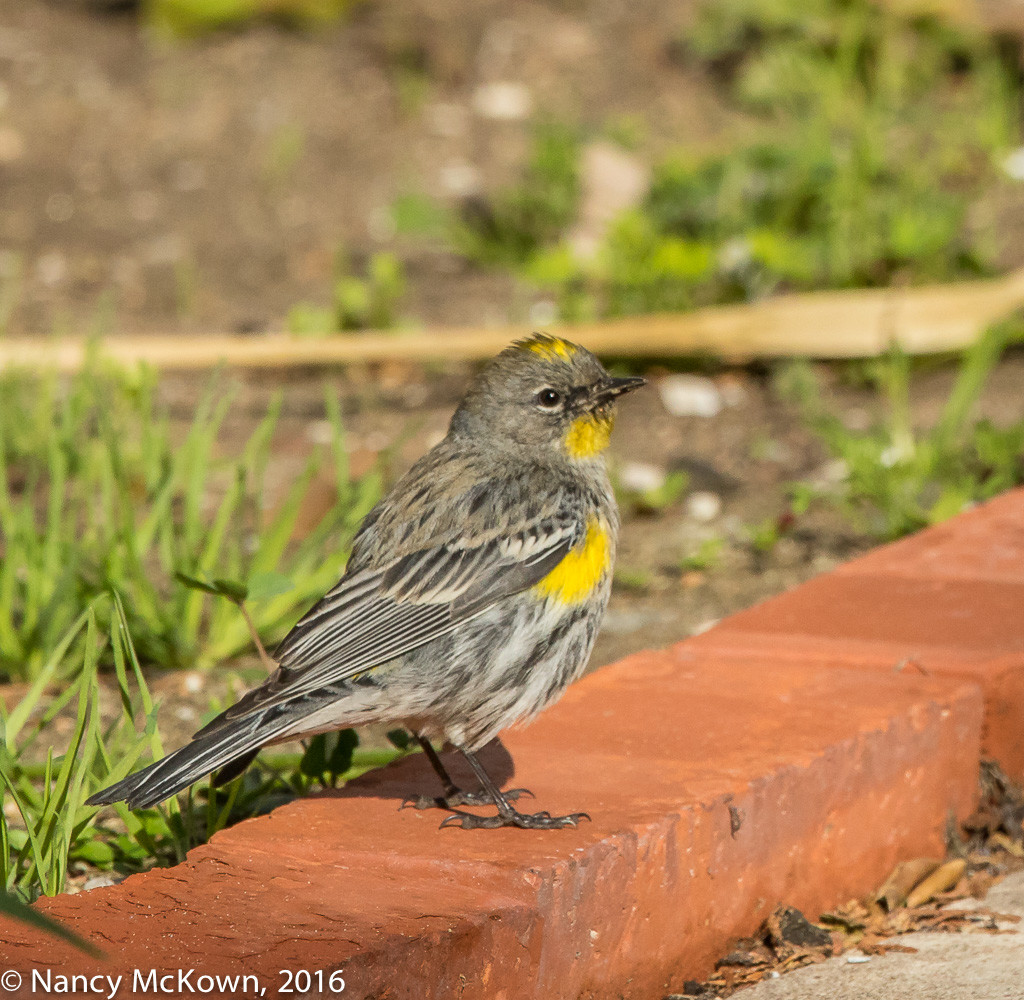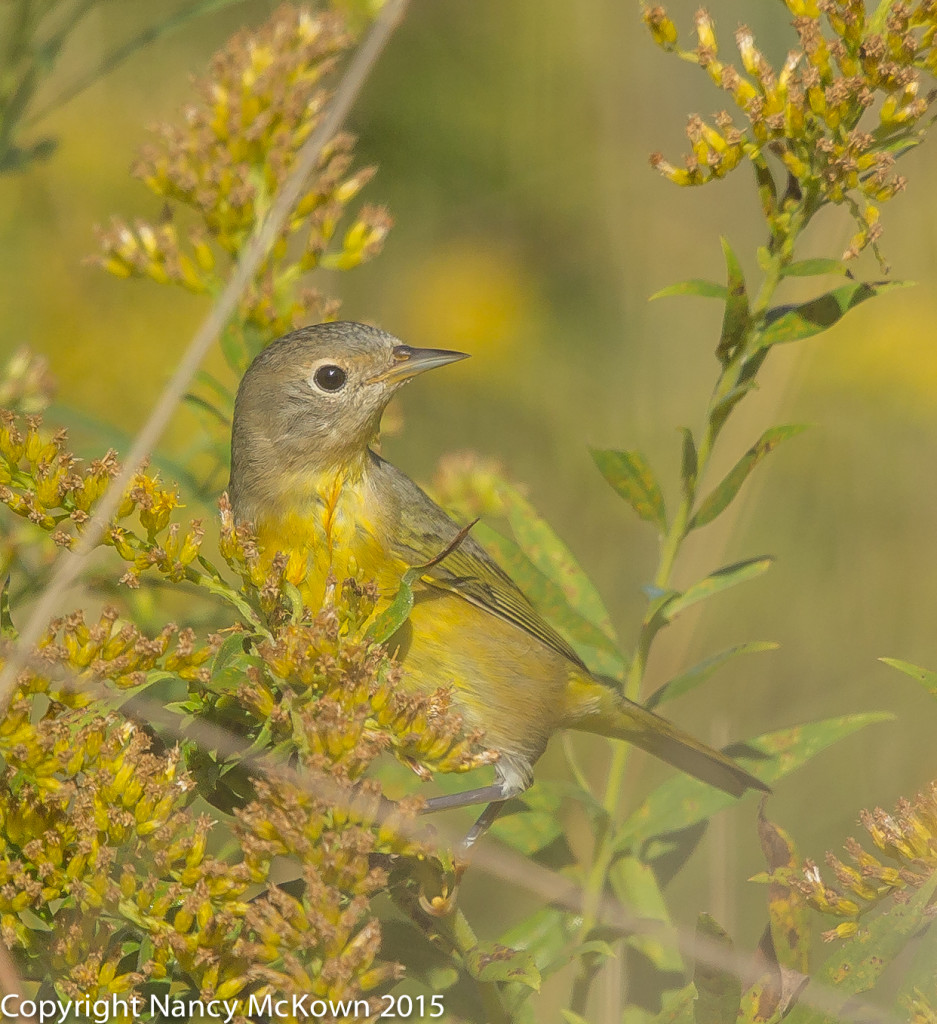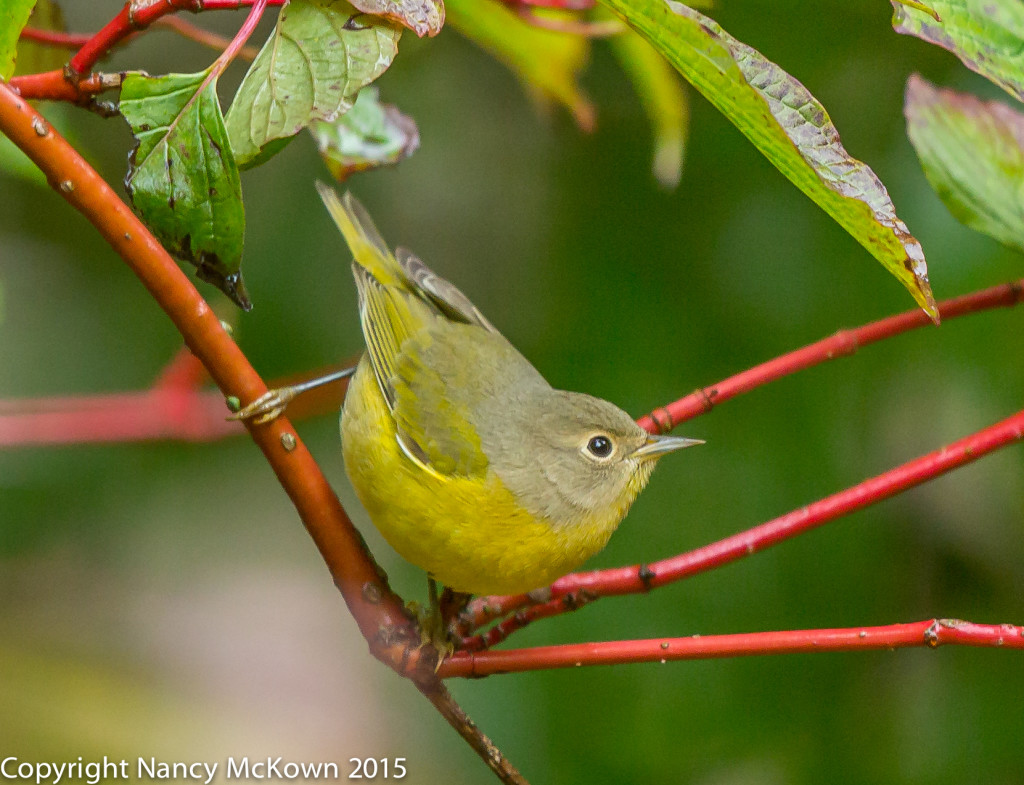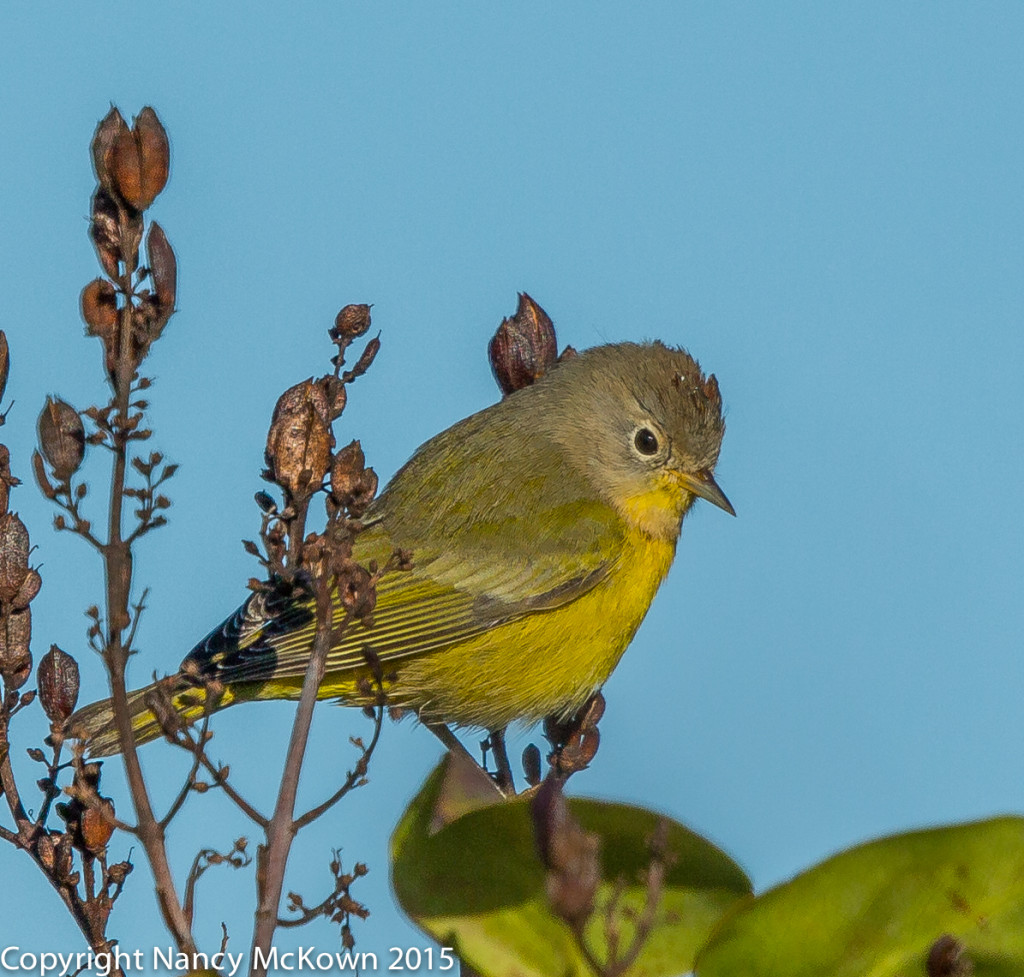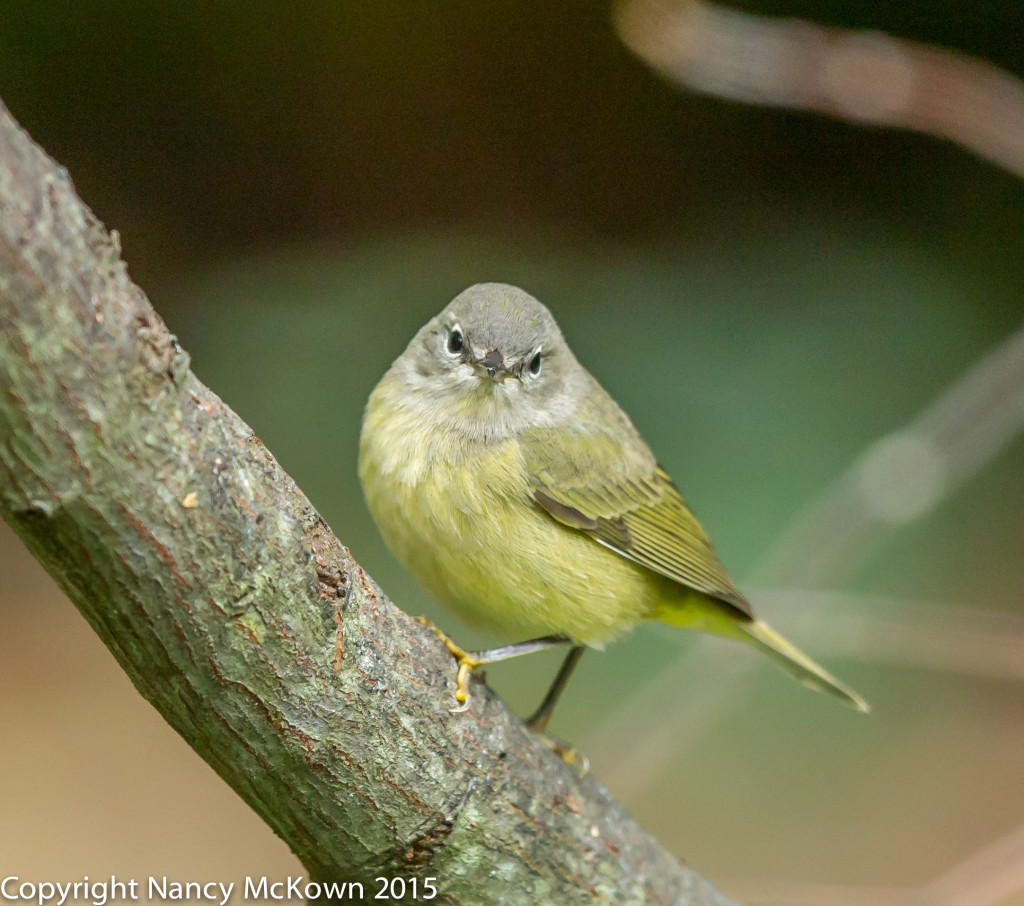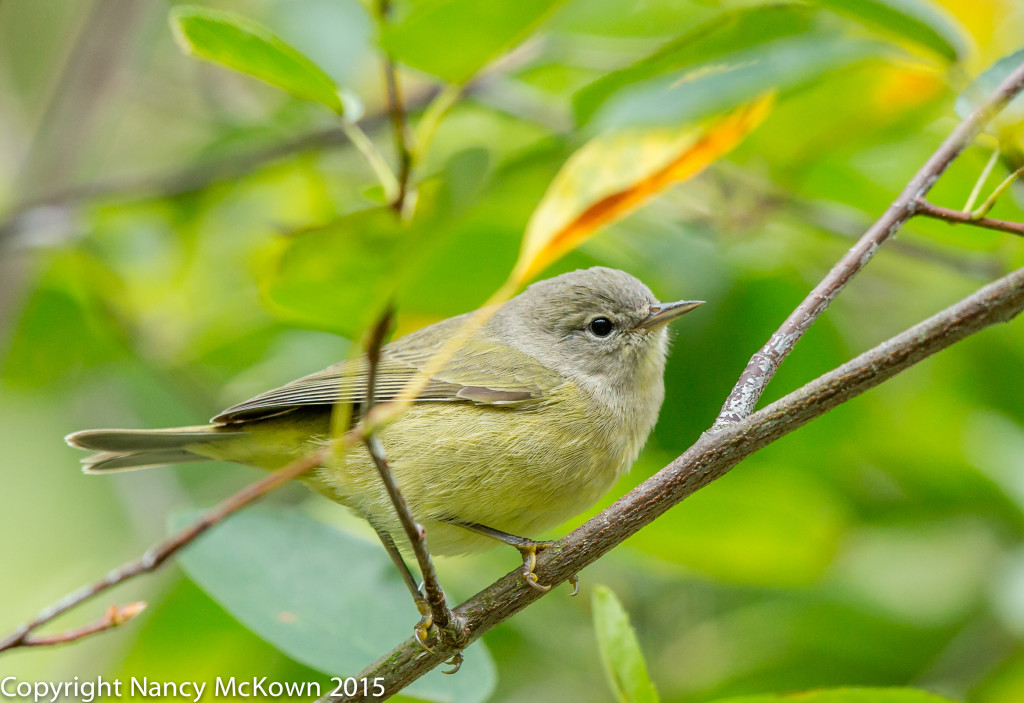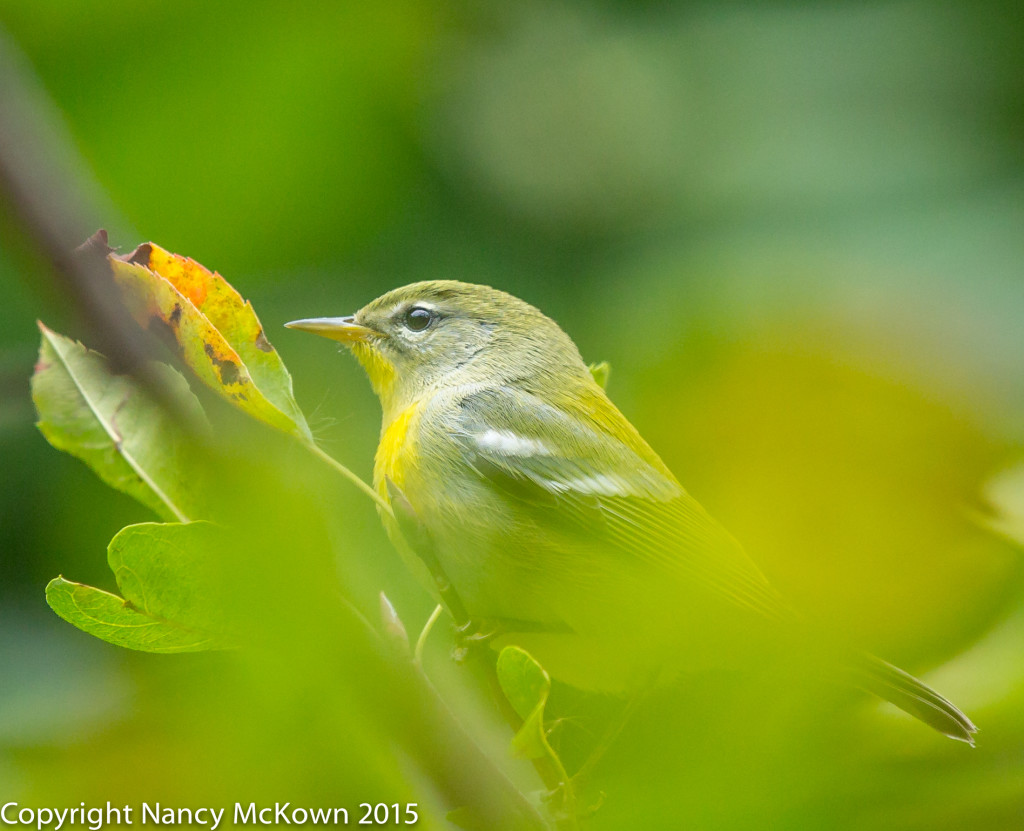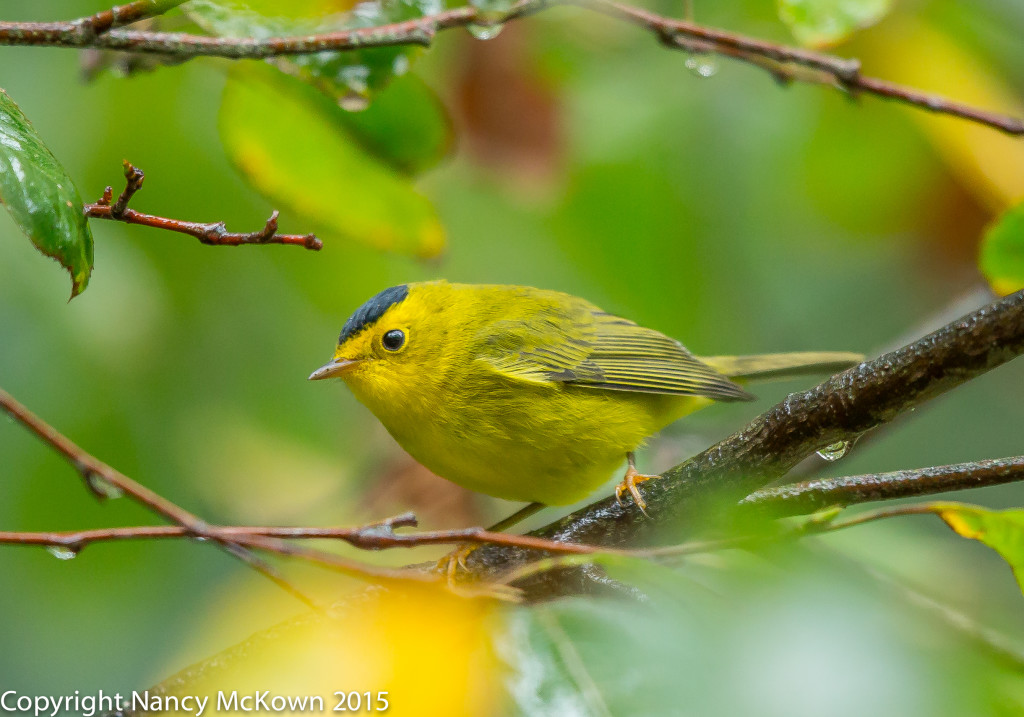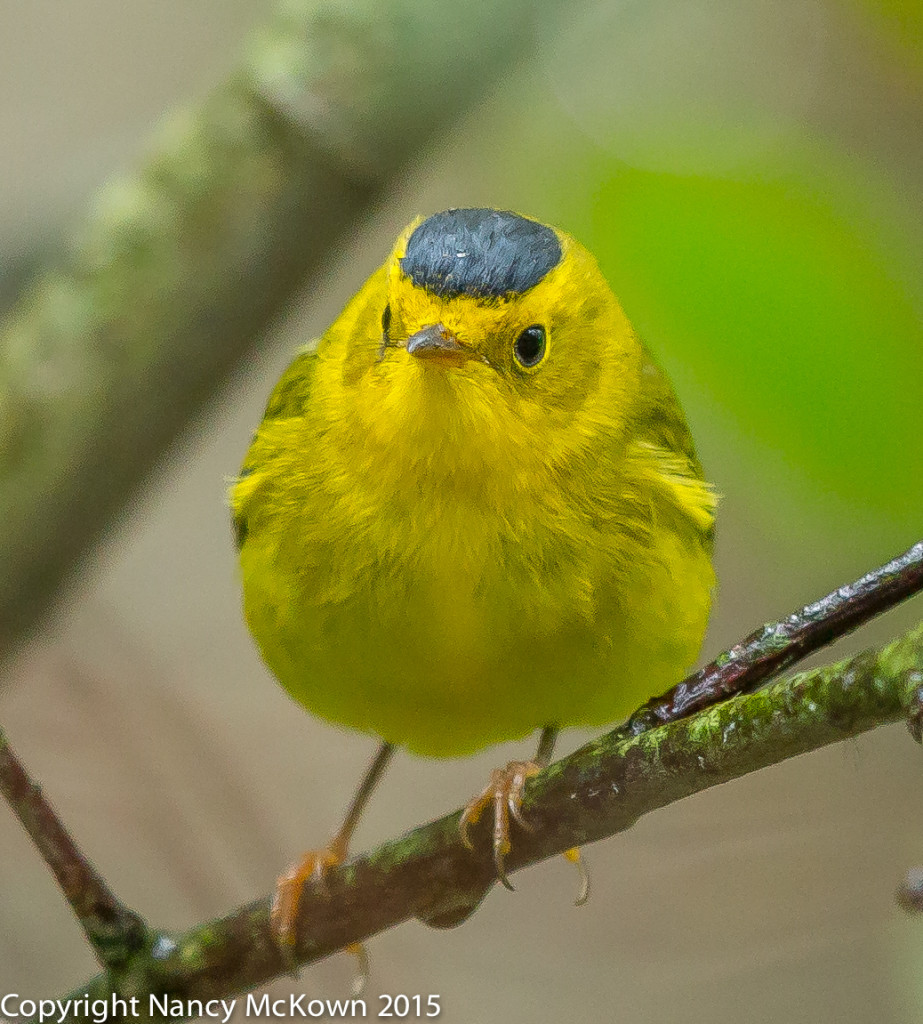A Peaceful Morning on the Deck
It’s mid morning in early June; the sunlight is heavily filtered in our yard. I catch the sweet scent of Locust flowers on the breeze and hear the soft droning of honey bees as they feast on the nectar rich Locust blossoms high above. As I set up the camera I think about how the birds must be feasting up there as well.
Chipmunks are everywhere this spring, fashioning their homes within the confines of the Sassafras and Locust logs densely stacked between tree trunks. They pause every few steps to check around for predators as they forage for food dropped below the feeders. Lots of impromptu and playful chasing going on.
On my deck, delicate single web threads join trees and furniture and sway with the soft wind. I can barely feel these silk gossamers as I move about with my camera equipment and disrupt their tenuous holds. These lines of gauze belong to the tiniest of spiders-and warblers seek them out.
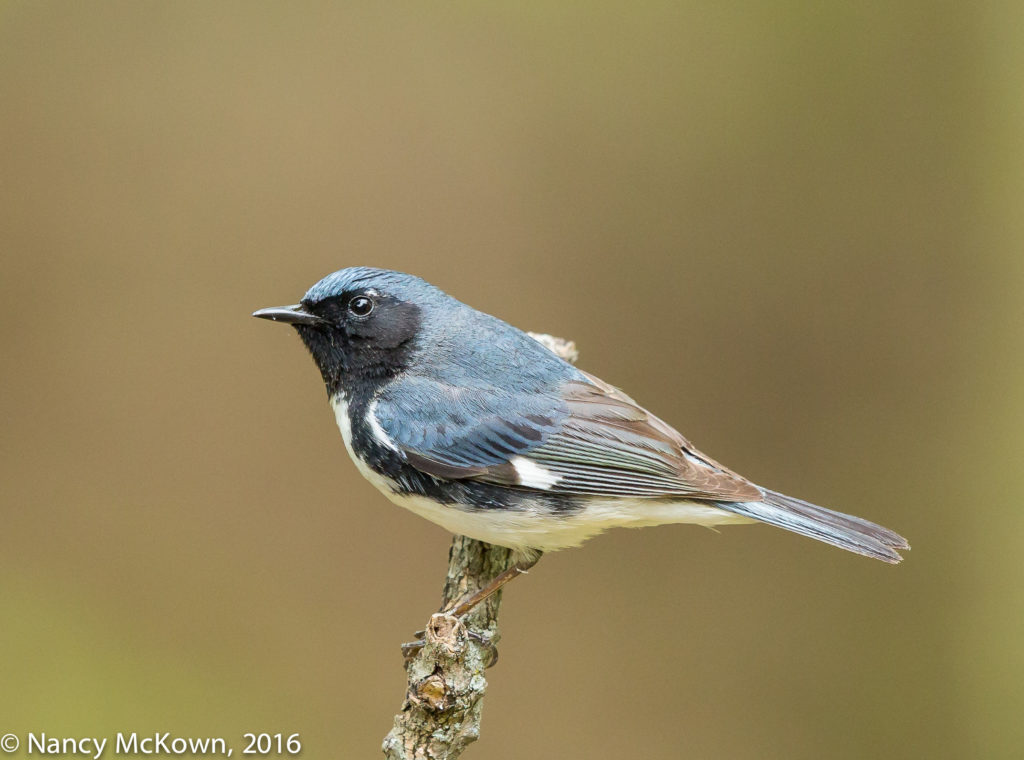
ISO1250; f/5.6; 1/400 Second
Photographing a Black Throated Blue Warbler
This Black Throated Blue Warbler did not seem especially shy- or perhaps he was just desperately thirsty from his long migration journey north. In any case, he came in close to the fountain for a drink, heedless of the camera and me.
The perch he chose was perfect….. at least 10 feet between the woodsy background and the bird. Because of the low light, I opened up the aperture and shot at a relatively slow (for birds) shutter speed. The bokeh, brown tinged with green, with no seams and no visible outlines of the tree trunks and brush in the background, complements the ragged, lichen draped perch and the bird’s plumage.
Black Throated Blue Warblers nest in the Blue Ridge Mountain range and also in Northeastern United States and Eastern Canada. They are known to seek out vast tracks of forests for their nesting grounds, so it is likely that they made their homes in SouthWest MI long ago. Come fall, they will migrate south to the Gulf States and the Caribbean.
The male Black Throated Blue Warbler keeps his distinctive blue and black plumage year round. The female mostly blends, like a lot of other female warblers. I photographed the female Black Throated Warbler last fall with her dull olive plumage and subtle white lines above the eyes.
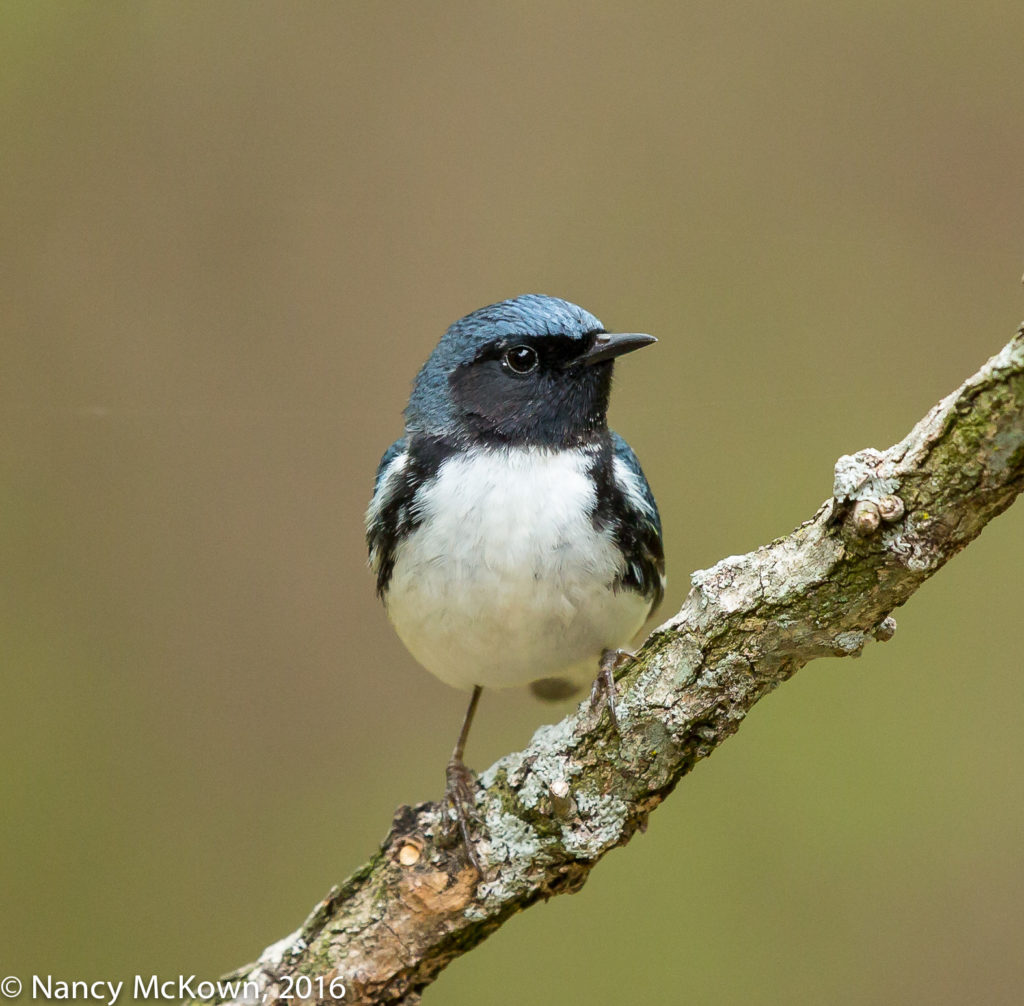
ISO1000; f/6; 1/400 Second
A Slow Migration Season
This spring, a total of six warbler species stopped to rest in our yard and within the camera’s view. None came so boldly as this Black Throated Blue Warbler.
The migration season for warblers is past. During most of April and May, my cameras and I have been at the ready. I’ve watched the leaves mature and reach out to take their share of the available light. This Spring, we’ve had very little success photographing migrators, despite our warbler friendly yard filled with thicketed and overgrown brush. I know millions of birds are coming through just as they’ve done for millennia, I’m just not seeing them. Jealously, I note that lots of luckier bird photographers are posting splendidly colorful finds. All I can do is continue my search and hope my luck gets better come Fall migration.
I’ve updated my Spring 2016 migration Flickr page. Looking over my past images, it seems I have more luck photographing warblers during Fall Migration. Another adventure to look forward to!

